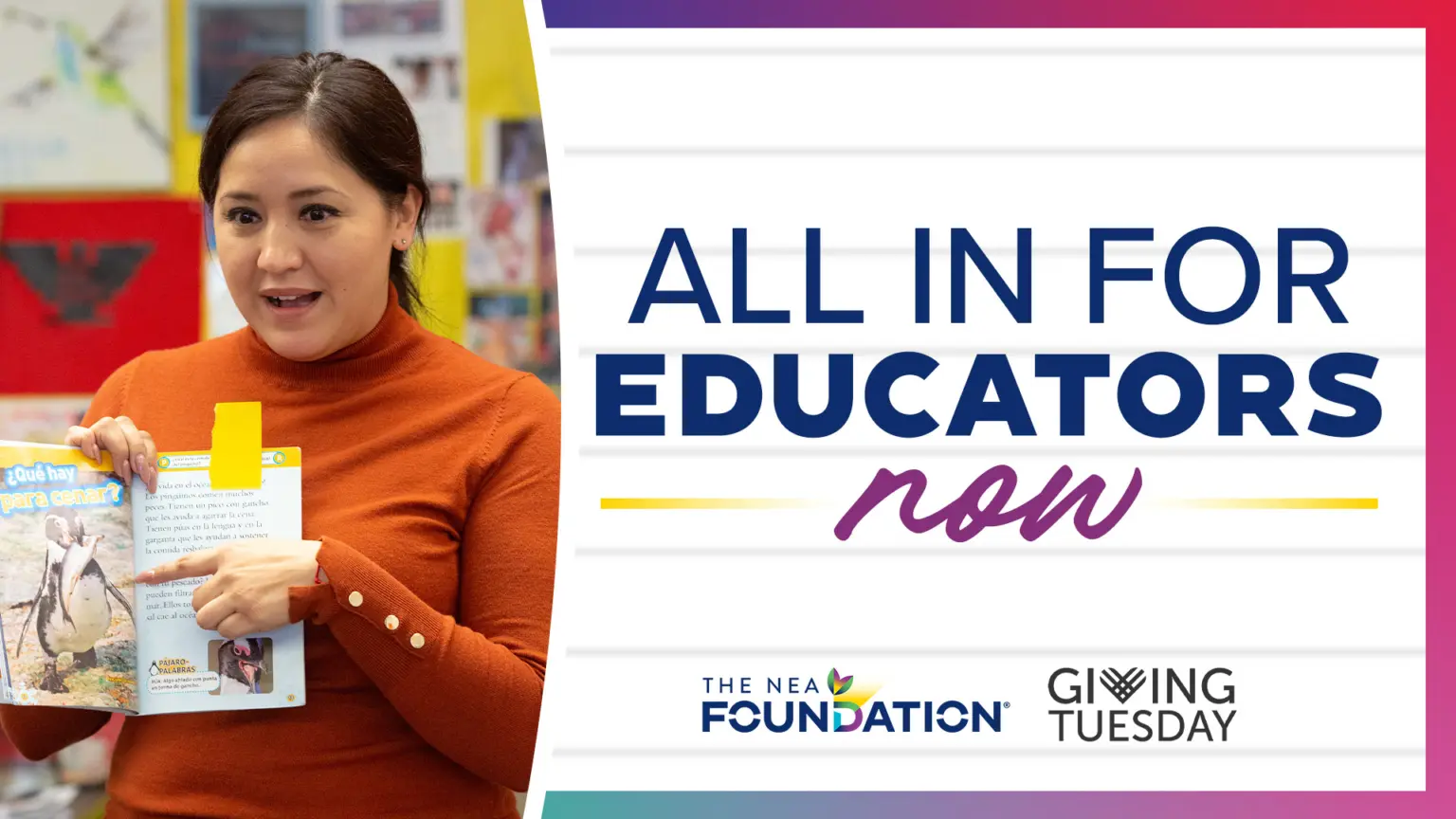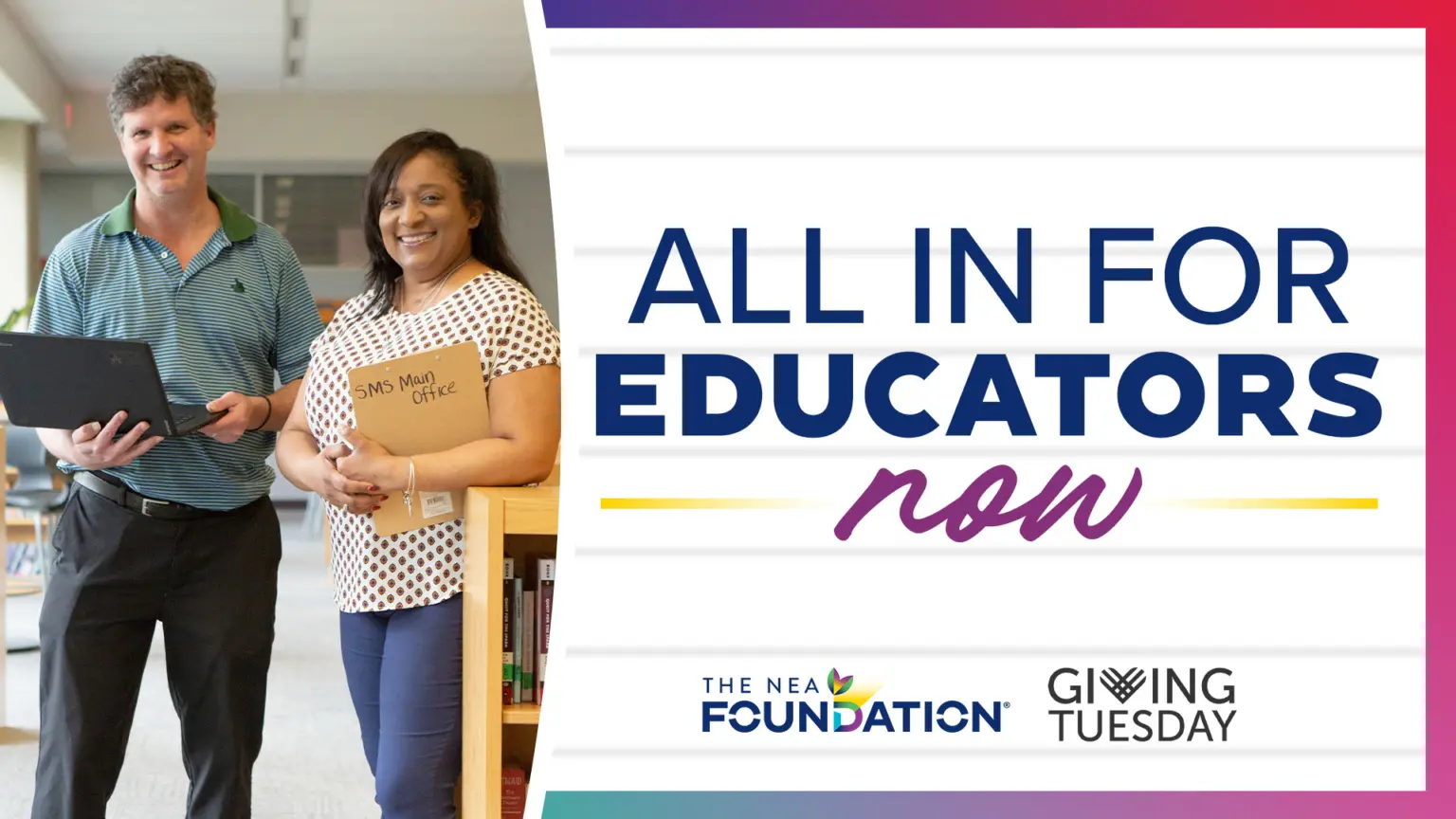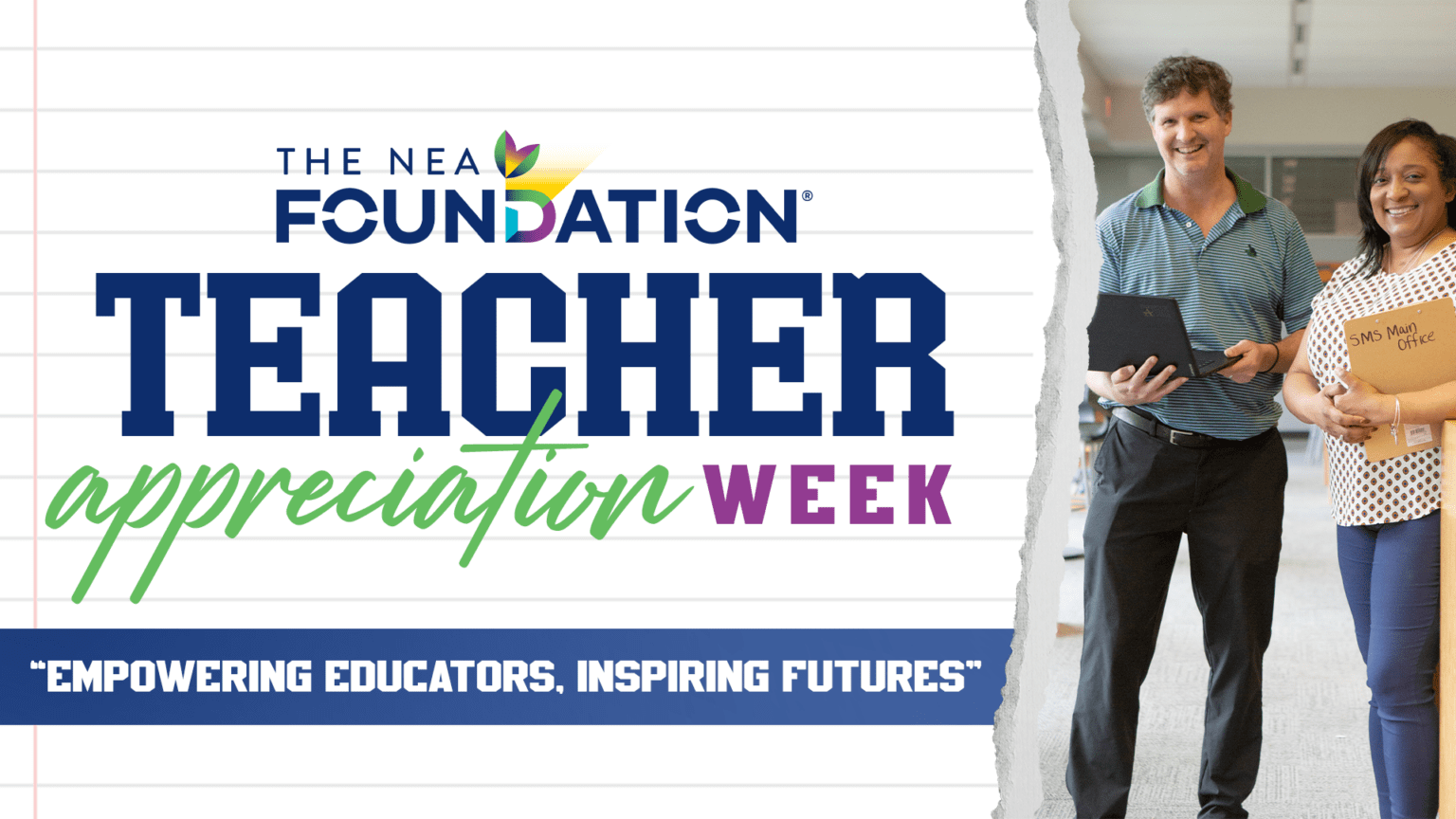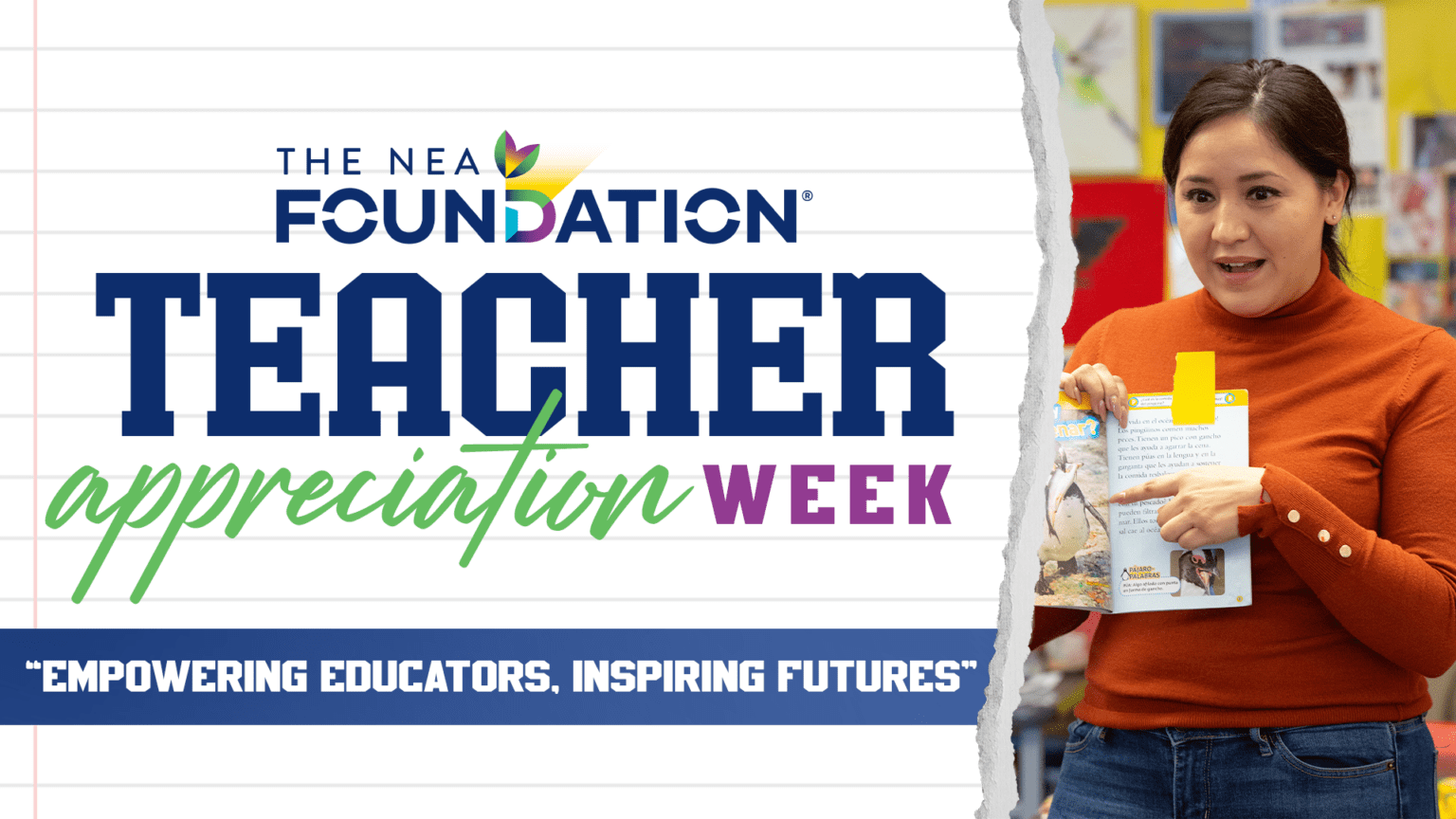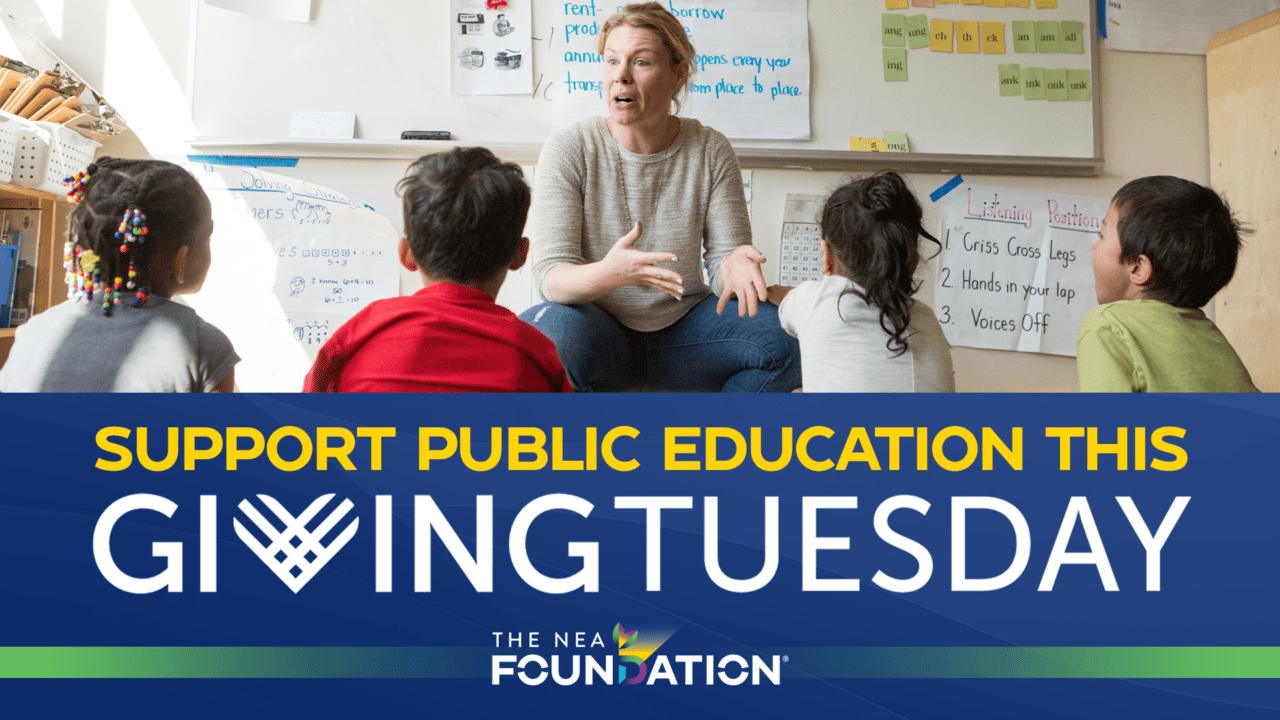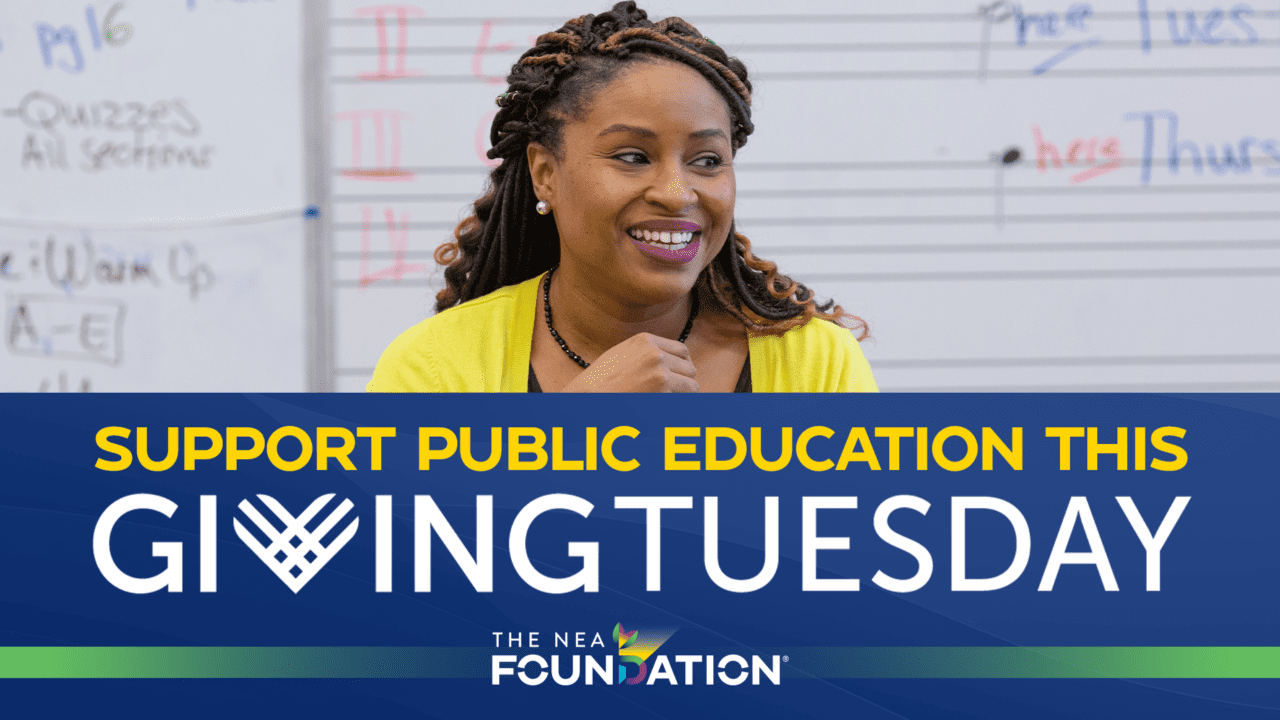The NEA Foundation launched the Community Schools Initiative (CSI) in 2020 to support the development of community schools in Arkansas, Louisiana, and Mississippi, a region known as the Deep South. Since then, CSI has supported the transformation of numerous public school sites in the tristate area into community schools, resulting in a range of positive outcomes for students, families, and communities.
To provide an inside perspective into the CSI, we asked The Foundation’s new Program Officer for Community Schools, Jazz Cleark, to answer a few questions about community schools, the impact they can have, and what it’s like to work with The NEA Foundation’s CSI.
Q: Can you explain how community schools work, in a nutshell?
Community schools are a strategy for advancing educational equity in which families, local organizations, businesses, community leaders, students, educators, and others are invited to collaborate and play a part in the education and wellbeing of children. These stakeholders work together with a “whole child” approach to learning. It’s extremely difficult for students to learn if they are hungry, mentally or physically unwell, or experiencing trauma of any sort. Community schools at their core are about removing these barriers to learning so that all students have what they need to succeed, regardless of their background.
Community schools also ultimately help revitalize neighborhoods, support families, and strengthen the local workforce. They allow students the freedom to dream beyond their wildest imagination because their entire community is represented, present and committed to helping them achieve.
Q: Why does The NEA Foundation’s Community Schools Initiative focus on the Deep South?
The Deep South is one of the most under-resourced regions in the country. It has the highest poverty rates in the country. Nearly half of American children who live in poverty live in the South. The South is also home to the country’s largest concentration of Black Americans. So investing in the South is about supporting racial justice, educational justice, and economic mobility.
Additionally, much of the South is rural. For parents who live in the rural South, taking their child to see a doctor when they’re sick can require a significant commute. This might mean the child missing a full day of school and falling behind academically, or the parent missing work and potentially losing pay when they’re already experiencing financial hardships. No parent wants to have to make the choice between their child’s health and their academic success or the family’s financial wellbeing.
This is just one example that demonstrates why community schools are essential in the region. In Arkansas, the Dermott School District has partnered with a local health clinic so students can get dental and healthcare services right on the school campus. This means that no student has to miss a full day of school to visit a doctor and no parent has to choose between work and their child’s health.
Q: That’s really powerful. Can you share some other examples of community schools in action?
There are really so many to choose from. Washington Elementary School in Little Rock, Arkansas, established a partnership with a local bank to support a financial literacy program. Students are taught by banking professionals what it means to open a bank account, and how to fill out deposit slips, and how to play various roles in banking—for instance, acting as tellers for real banking transactions. Parents can open checking and savings accounts at the school while they’re picking up their kids, which eliminates a commute to the bank. And, they encourage and incentivize contributing to savings accounts. Families at this school have saved a combined $90,000 through this financial literacy program just this year, which is really amazing.
At Chicot Elementary School in the same district, there’s a farm-to-table education program designed to reinforce math and science skills with real-world application. Students plant vegetable gardens, tend to them throughout the year, harvest them, and sell the produce to the local community. So in addition to the immersive learning, they’re building connections in the community and gaining entrepreneurial experience.
At another school district, in Batesville, Arkansas, the district made a really intentional effort to seek feedback from families concerning what they needed, and it responded to the feedback by putting programs into place to address those specific needs. There’s such a wide range of programs, supports, and services, from helping with college selection and financial aid applications, to providing support for English language learners, as well as resumé writing and career advancement for parents. The district was featured in a recent report on how community schools are transforming public education, because that’s exactly what’s happening. Programs like this help students succeed because they help their families and communities succeed.
Q: You have a background as a classroom educator. What brought you to the Community Schools Initiative?
Well, as a former classroom educator, I know firsthand the difficulty involved in educating students who have needs that aren’t being met. I know what it’s like to have a pantry of food in my classroom, and a stockpile of personal hygiene resources. I’ve bought more coats and shoes and socks than I care to say. I know firsthand that when we support children and families in their times of need, and when we provide experiences that enrich them, that students are then able to bring themselves to class and just focus on learning.
On a personal level, I grew up in a family that had limited resources, and it was because my family had a village, because my teachers and my community cared, that I was afforded opportunities to grow and develop, and my family was supported during times of need. So I know what that’s like and how invaluable it is to have access to community support.
Q: You also have a background in community organizing. Can you share what that was like and how it connects to your work today with the Community Schools Initiative?
I was an organizational specialist with the Mississippi Association of Educators, where I led the Safe Water in Jackson Coalition, advocating for the rights of Jackson public school students to have access to safe and reliable water at school and at home. As an organizer, I know the importance of bringing people together to co-create and execute solutions to problems we identify together. People need to be included to feel valued and contribute to solutions. When I look at a situation, I ask myself, who are the people, what are their concerns, and how do they want to solve them? In the Community Schools Initiative, we don’t come in with any motive except to support. We don’t tell people how to solve their concerns. We support them how they want to be supported.
I also realized recently that I’ve been organizing people since I was in elementary school! I organized my classmates who wanted access to more enriching classroom experiences.
In a way, it comes back to my family. Even in our most vulnerable times, my folks were always the type to show up for people. If you were hungry, you got a plate, and even if there was only a little, there was always enough to go around. My aunt used to take me to community meetings and school board meetings. I come from a family of educators and organizers. So I kind of didn’t have a choice [laughs].
Q: What are you most excited about regarding the future of the Community Schools Initiative?
For one, the Foundation is making educator leadership a priority in the CSI, and that’s not generally something that’s emphasized a lot around the country. Educators are an essential component of community schools, because they have some of the strongest relationships with students, strong ties to the community, and some of the best insights and ideas. They’re foundational. So we really want to make sure that educators are at the core of what we do and have opportunities to participate and pursue leadership roles.
Secondly, we’re bringing in university partnerships in the hope that we can support pathways to higher education, and we’re specifically interested in partnering with Historically Black Colleges and Universities (HBCUs) in the region. Our goal is to connect each of our community school sites to an HBCU in what’s referred to as a university-assisted partnership. This endeavor feels really meaningful to me because of the opportunities it will foster, and, I’m an HBCU graduate myself, so it’s personal.
Q: That is all so exciting. It sounds like there can be a lot of different stakeholders involved in community schools. Isn’t it hard to get different organizations and people aligned and working together?
It’s true that a lot of people say the community schools strategy is hard work. It requires commitment and change, and anything that requires commitment and change is difficult. But the part that’s easy about the work is when we realize that we all have the same desire for our children and communities to be strong and prosperous, and when we keep that at the forefront, it makes the work easy. We all have an understanding that we are all individuals with our own nuances, but we make up a community with a shared goal, and when we keep that at the forefront, it’s not hard. It’s worth it.
Follow us on social media and subscribe to our newsletter to stay up to date about the Community Schools Initiative and more!


